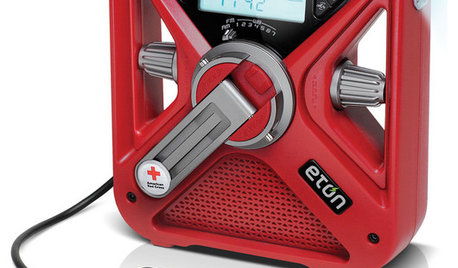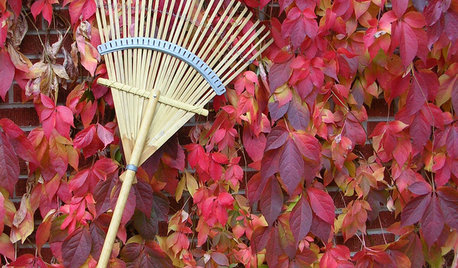Cheap compost! till or no till?
ipingfreely
13 years ago
Related Stories

GARDENING GUIDESGet on a Composting Kick (Hello, Free Fertilizer!)
Quit shelling out for pricey substitutes that aren’t even as good. Here’s how to give your soil the best while lightening your trash load
Full Story
DIY PROJECTSMake a Gorgeous (Cheap!) Pillow Using Vintage Clothes
With secondhand fabric and a steady hand on the sewing machine, your pillow choices are endless
Full Story
HOME TECH7 Ways to Charge Up and Connect After Disaster
Products and tips for communicating and keeping essential items running till the power's back on
Full Story
BUDGET DECORATINGBudget Decorator: A Most Affordable Gallery Wall
Need to fill a wall on the cheap? See how to make use of something pretty cool you may already have
Full Story
KITCHEN DESIGNThe Cure for Houzz Envy: Kitchen Touches Anyone Can Do
Take your kitchen up a notch even if it will never reach top-of-the-line, with these cheap and easy decorating ideas
Full Story
DECORATING GUIDESDIY: Make Your Own Chalkboard Paint
3 simple steps to chalk it up in any color anywhere for cheap
Full Story
GREEN BUILDINGWhy You Might Want to Build a House of Straw
Straw bales are cheap, easy to find and DIY-friendly. Get the basics on building with this renewable, ecofriendly material
Full Story
GARDENING GUIDESGardening Solutions for Dry, Sandy Soils
Has your desert or beachy site withered your gardening creativity? Try these ideas for a beautiful, easy-care landscape
Full Story
HOLIDAYS7 Quick and Easy Indoor Halloween Decorating Ideas
Make a pumpkin family portrait — no carving! — and other simple but eye-catching fall tabletop and mantel arrangements
Full Story
GARDENING GUIDESYour November Garden Checklist
What to do around the U.S. this month to help your garden thrive — when you're not admiring fall's brilliant colors, that is
Full StoryMore Discussions






louisianagal
Kimmsr
Related Professionals
Ballenger Creek Landscape Architects & Landscape Designers · Baltimore Landscape Architects & Landscape Designers · El Sobrante Landscape Contractors · Mason Landscape Contractors · Maywood Landscape Contractors · Pleasant Hill Landscape Contractors · Roseville Landscape Contractors · Seven Hills Landscape Contractors · St. Louis Landscape Contractors · Tinton Falls Landscape Contractors · Vermilion Landscape Contractors · Houston Decks, Patios & Outdoor Enclosures · Oak Ridge Decks, Patios & Outdoor Enclosures · Pittsburgh Decks, Patios & Outdoor Enclosures · Spanaway Decks, Patios & Outdoor Enclosuresplaidbird
Karchita
billums_ms_7b
terrene
Frankie_in_zone_7
simcan
Lloyd
curt_grow
tsugajunkie z5 SE WI ♱
bob64
alphonse
greenmulberry
Kimmsr
terrene
wayne_5 zone 6a Central Indiana
joepyeweed
alphonse
simcan
joepyeweed
simcan
Lloyd
daguvanuh
terrene
T S
Lloyd
alphonse
daguvanuh
Lloyd
toffee1
alphonse
wayne_5 zone 6a Central Indiana
Lloyd
tkhooper
wayne_5 zone 6a Central Indiana